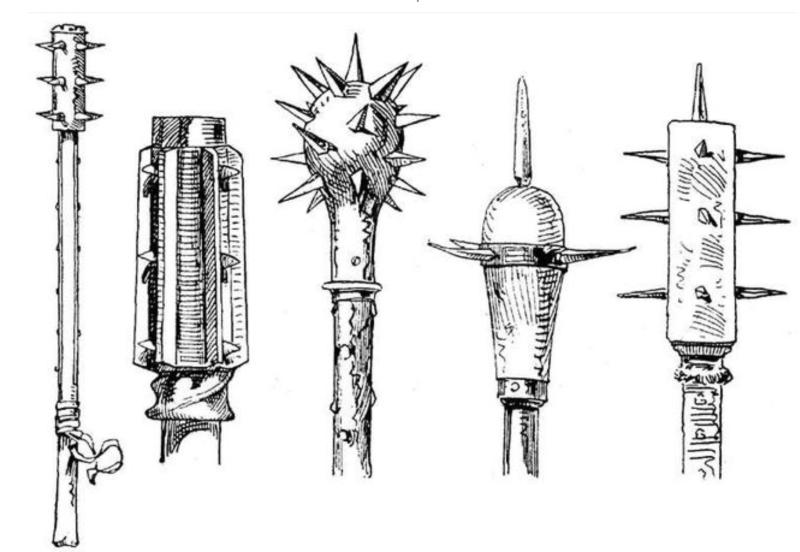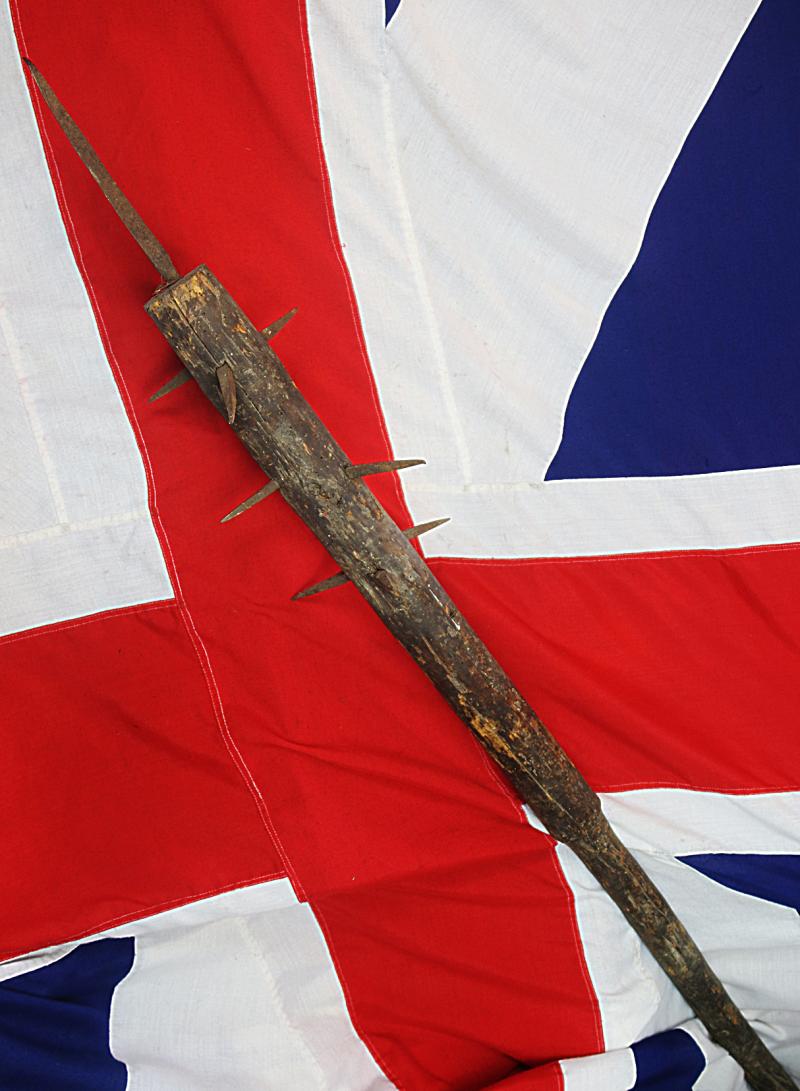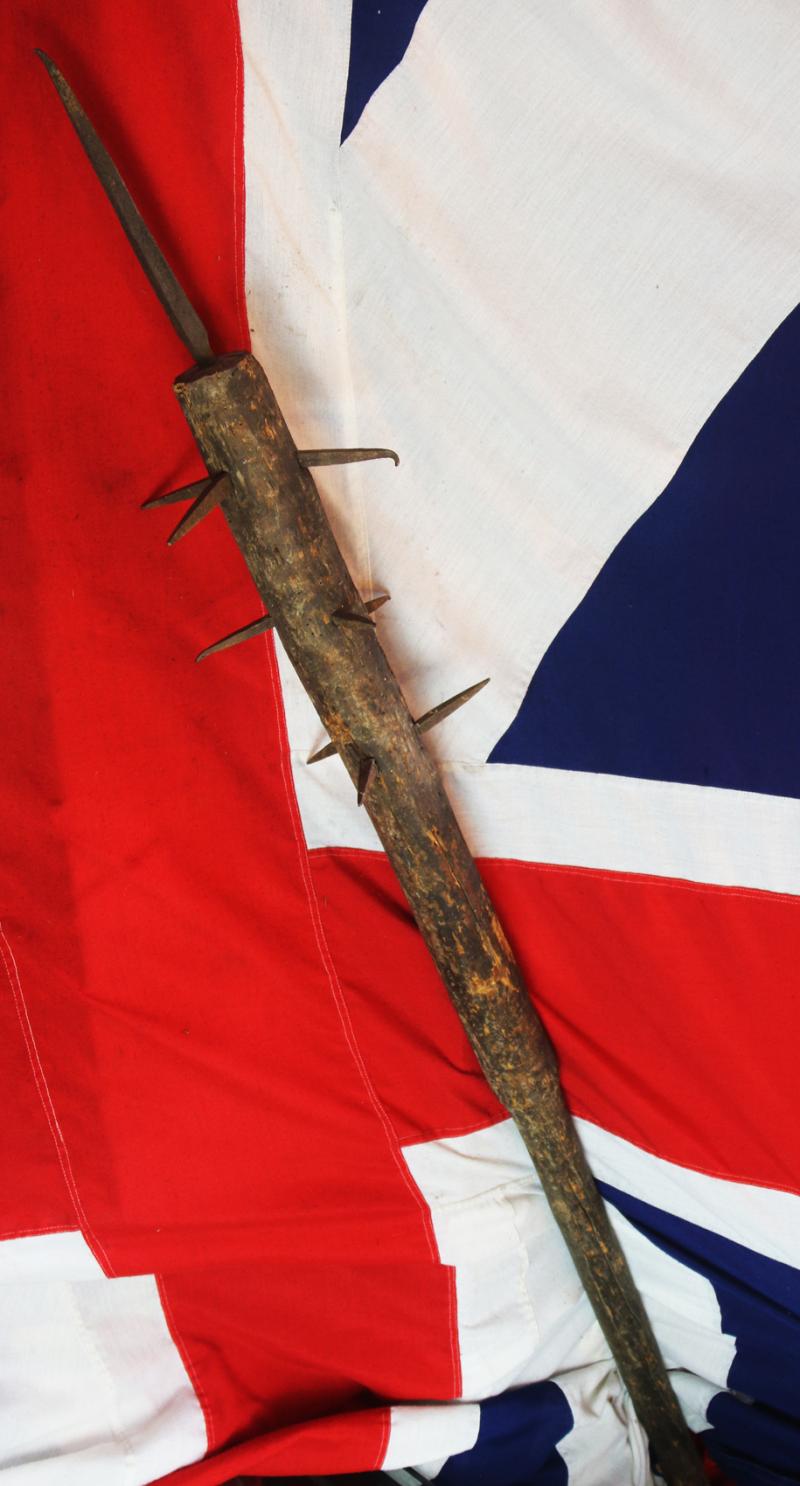16th Century Militia Man’s “Morgernstern” or "Holy Water Sprinkler"Mace Flail Possibly From Germany. Also A Weapon of The City Guard and Watchmen of Germany or Switzerland
Long wooden haft with large protruding blacksmith nail spikes. An extraordinary intimidating weapon, crude, yet incredibly effective. A rare German PoleArm known as a Morgenstern ‘morning star’ or ‘Holy Water Sprinkler’. The holy water sprinkler (from its resemblance to the aspergillum used in the Catholic Mass), was a morning star used by the English army in the sixteenth century and made in series by professional smiths. One such weapon can be found in the Royal Armouries and has an all-steel head with six flanges forming three spikes each, reminiscent of a mace but with a short thick spike of square cross section extending from the top. The wooden shaft is reinforced with four langets and the overall length of the weapon is 74.5 inches (189 cm). This kind of war flail originated as a peasant weapon and was particularly popular in Germany and central Europe, also used by city guards and watchmen in Germany and Switzerland. Typically a long wooden shaft, with cylindrical head and arrangements of iron spikes. These weapons were frequently found in German armouries, and large fortified houses, and used by local standing militias and guards. A fine example believed to have been made for Henry VIII combining a gun mechanism with the spiked head is in the Royal Armouries collection in Leeds. This example is an iconic example, the head bears a long spike and further rows below of shorter spikes, very strong and four-sided. In good stable condition, old woodworm to surface not active. Length approximately cms. Dating to the 16th century.
Morning Stars were first popularized in Germany during the fourteenth century. The name (originally Morgenstern) seems to reference the shape of the head like a star – although this is not confirmed.
The Morning Star resembles a mace, which was developed somewhat independently. As the mace transitioned to being constructed of metal, the morning star kept its wooden shaft.
There are two very impressive examples of morning stars housed in the museums of Vienna. The first measures 2.35 meters in length (7 ft 9 in) and has a separate wooden head slipped over the top of the shaft and reinforced with steel straps. The spikes are arranged asymmetrically. The second has a head entirely made of steel and four V-shaped spiked mounted o a long shaft. There are also 183 specimens in Graz, made in series in the 1600s.
Morning stars have been depicted in medieval art, carried by armoured knights. In a 1486 poem, one is mentioned and described as “a rather simple morning star with spiked mounted in an asymmetrical pattern”.
The morning star was used by both infantry and cavalry. There were three types of weapon differing in quality.
The first was a well-crafted military type used by professional soldiers and made in series by expert weapon smiths in town arsenals.
The second, this example, was used by militia men and crafted from wood fitted with nails and spikes by a local blacksmith. For this type, the shaft and head were usually made of one piece which was sometimes reinforced with an iron band.
The third type was mostly decorative, made of metal and with a shorter shaft.
Overall 83 inches 6 ft 11 inches, {211 cm}
UK mainland delivery only, by our own company courier, {due to size} allow up to 14 days for delivery. Too long to ship overseas.
Code: 25245
2250.00 GBP








